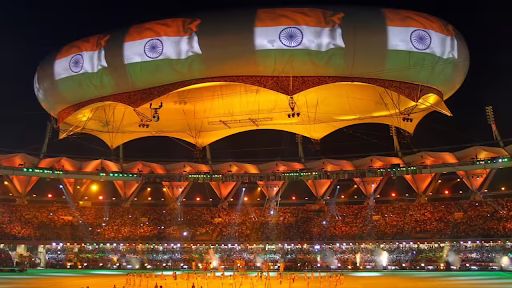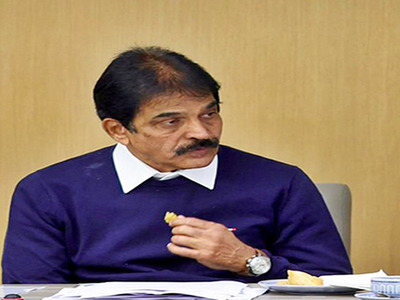India Hosting The 2030 Commonwealth Games: What It Means For The Nation Compared To 2010
India is set to host the commonwealth games in 2030, with Ahmedabad chosen as the venue, this represents a powerful moment for the country’s sporting future. This opportunity comes exactly two decades after India last hosted the Games in New Delhi in 2010. While the 2010 edition is remembered as a mix of pride and controversy, the 2030 Games mark a far more confident, globally aligned, and ambitious India stepping onto the world stage. India has a lot to learn from their last hosting of the commonwealth games with a massive global shift in the past two decades.
Capability in 2010 to Leadership in 2030
When India hosted the Commonwealth Games in 2010, the country was still emerging as a global economic force. The event was a success in the end despite facing intense scrutiny over delayed construction, infrastructural lapses, corruption scandals, and last-minute fixes dominated global headlines. India was in a position where it had to prove it could host an international sporting event of this stature.
In contrast, the 2030 Games show India operating from a position of strength. The bid was strategic, well-planned, and globally respected. Having been the recent hosts of the G20 Summit, the focus was no longer merely hosting, it was about positioning India for the 2036 Olympic Games bid. The Commonwealth Games are now part of a long-term sporting roadmap.
The focus shifts to Ahmedabad from Delhi, The comparison between the two host cities reflects India’s developmental evolution. In 2010, Delhi’s venues faced a race-against-time construction efforts, quality concerns, and last-minute problem-solving. The Athletes’ Village received criticism, and much of the infrastructure was not designed for long-term use.
Now, Ahmedabad enters the 2030 Games with infrastructure already at international standards. The Narendra Modi Stadium, currently the world’s largest cricket stadium, the planned Sardar Vallabhbhai Patel Sports Enclave, and a modern, long-term Athletes’ Village demonstrate a future-ready approach. Instead of constructing hurriedly, India is building sustainably, a sports ecosystem designed to last decades.
A New Sporting Culture Defines 2030
The last two decades have transformed India’s sporting identity. In 2010, India had a handful of global stars and limited institutional backing for Olympic sports. Today, thanks to programs like Khelo India, TOPS, high-performance centres, and increased corporate sponsorship, India is producing medal-winning athletes across boxing, wrestling, badminton, shooting, weightlifting, and para sports.
The 2030 Games arrive at a time when India’s sports culture is healthier, more professional, and more widely supported than ever. The event will give homegrown athletes the chance to perform in front of massive crowds on one of the world’s biggest sporting stages.
A Changed Picture over Transparency
One of the biggest criticisms of 2010 was mismanagement and financial misappropriation. Those lessons reshaped Indian sports administration. Today, monitoring systems, independent audits, and better transparency define event planning. Commonwealth Sport officials have praised India’s planning, ambition, and clarity in the 2030 bid.
This improvement in governance sends a strong message, India is now seen as a reliable, efficient, and trustworthy host nation worthy of handling something like the Commonwealth Games and even the Olympics.
Boosting India’s Global Brand and Economic Vision
Hosting the centenary edition of the Commonwealth Games gives India a powerful branding opportunity. Ahmedabad will witness large-scale tourism, upgraded transportation, hotel expansion, job creation, and international spotlight. More importantly, the Games will strengthen India’s pitch to host the 2036 Olympics, showcasing the country’s capacity to organize mega events seamlessly.

Capability in 2010 to Leadership in 2030
When India hosted the Commonwealth Games in 2010, the country was still emerging as a global economic force. The event was a success in the end despite facing intense scrutiny over delayed construction, infrastructural lapses, corruption scandals, and last-minute fixes dominated global headlines. India was in a position where it had to prove it could host an international sporting event of this stature.
In contrast, the 2030 Games show India operating from a position of strength. The bid was strategic, well-planned, and globally respected. Having been the recent hosts of the G20 Summit, the focus was no longer merely hosting, it was about positioning India for the 2036 Olympic Games bid. The Commonwealth Games are now part of a long-term sporting roadmap.
The focus shifts to Ahmedabad from Delhi, The comparison between the two host cities reflects India’s developmental evolution. In 2010, Delhi’s venues faced a race-against-time construction efforts, quality concerns, and last-minute problem-solving. The Athletes’ Village received criticism, and much of the infrastructure was not designed for long-term use.
Now, Ahmedabad enters the 2030 Games with infrastructure already at international standards. The Narendra Modi Stadium, currently the world’s largest cricket stadium, the planned Sardar Vallabhbhai Patel Sports Enclave, and a modern, long-term Athletes’ Village demonstrate a future-ready approach. Instead of constructing hurriedly, India is building sustainably, a sports ecosystem designed to last decades.
You may also like
- Japan denies report that Trump told PM not to provoke China on Taiwan
- ISKCON reclaims its original 1969 London site
 Venugopal alleges 'managed mandate' in Bihar as Congress slams EC, claims voter deletions
Venugopal alleges 'managed mandate' in Bihar as Congress slams EC, claims voter deletions- Russian court hands life sentences to eight men over Crimean bridge blast: Report
- Congress reviews Bihar poll debacle; leaders flag 'vote theft', EC bias
A New Sporting Culture Defines 2030
The last two decades have transformed India’s sporting identity. In 2010, India had a handful of global stars and limited institutional backing for Olympic sports. Today, thanks to programs like Khelo India, TOPS, high-performance centres, and increased corporate sponsorship, India is producing medal-winning athletes across boxing, wrestling, badminton, shooting, weightlifting, and para sports.
The 2030 Games arrive at a time when India’s sports culture is healthier, more professional, and more widely supported than ever. The event will give homegrown athletes the chance to perform in front of massive crowds on one of the world’s biggest sporting stages.
A Changed Picture over Transparency
One of the biggest criticisms of 2010 was mismanagement and financial misappropriation. Those lessons reshaped Indian sports administration. Today, monitoring systems, independent audits, and better transparency define event planning. Commonwealth Sport officials have praised India’s planning, ambition, and clarity in the 2030 bid.
This improvement in governance sends a strong message, India is now seen as a reliable, efficient, and trustworthy host nation worthy of handling something like the Commonwealth Games and even the Olympics.
Boosting India’s Global Brand and Economic Vision
Hosting the centenary edition of the Commonwealth Games gives India a powerful branding opportunity. Ahmedabad will witness large-scale tourism, upgraded transportation, hotel expansion, job creation, and international spotlight. More importantly, the Games will strengthen India’s pitch to host the 2036 Olympics, showcasing the country’s capacity to organize mega events seamlessly.









